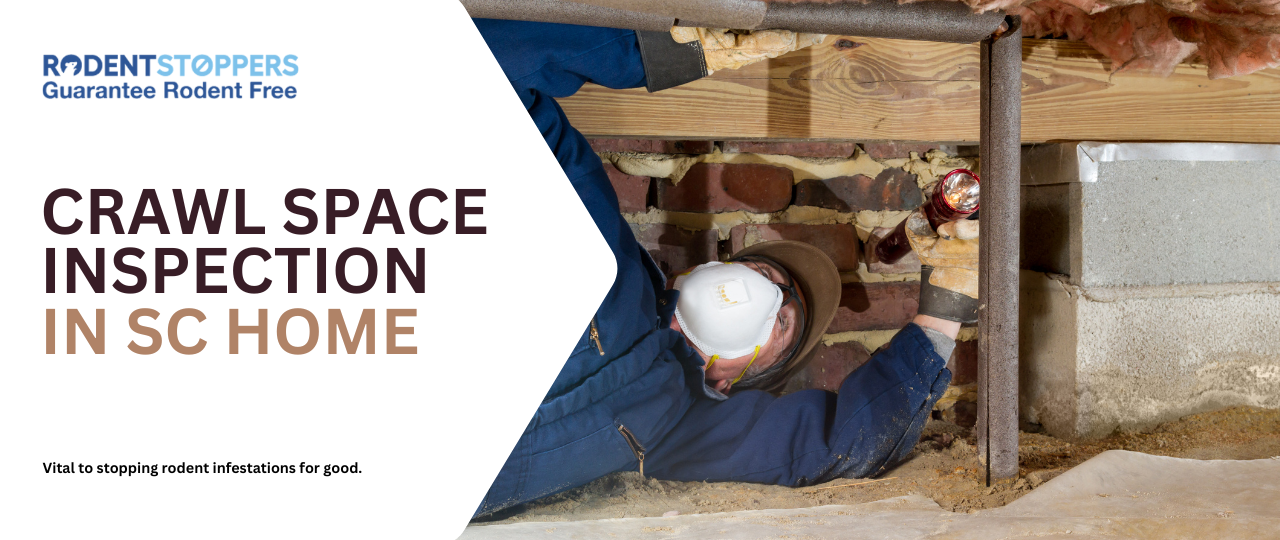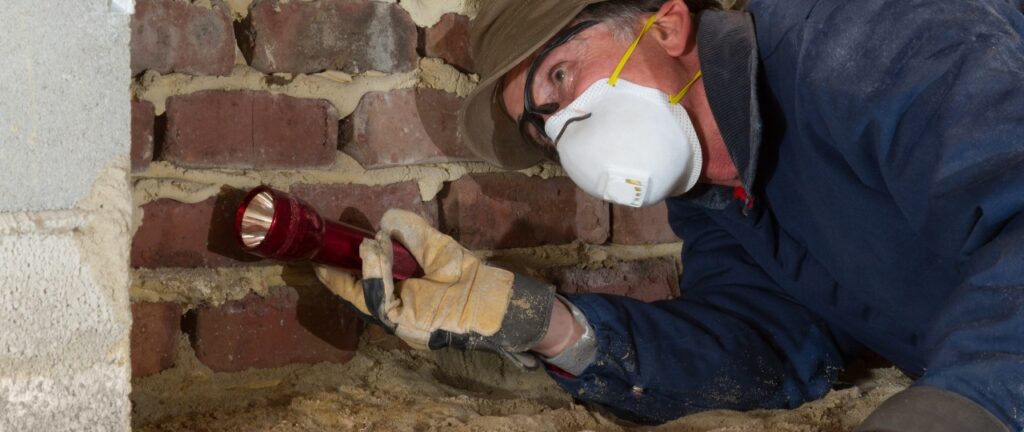
Crawl spaces are a standard feature in many Charleston homes, serving as a barrier between the ground and the home’s foundation. While they play an essential role in protecting against flooding and providing access to utilities, crawl spaces are also one of the most common entry points for rodents. Left unchecked, these dark, damp, and often neglected areas can quickly become a haven for rats and mice, leading to long-term infestations. Regular crawl space inspections are critical to identifying and addressing vulnerabilities, ensuring that rodent issues are resolved at their source and do not return.
Why Crawl Spaces Attract Rodents
The climate and environment of Charleston make crawl spaces particularly inviting to rodents. The humid subtropical conditions create damp, cool crawl spaces that provide shelter and protection from predators. Additionally, crawl spaces are often filled with potential nesting materials, including insulation, wood debris, and plastic coverings.
Rodents are opportunistic creatures, and even the smallest entry point—such as a gap around a pipe, an improperly sealed vent, or a hole caused by deteriorating materials—can provide access. Once inside, rats and mice use the crawl space as a base, traveling through the structure of the home via walls, floors, and utility conduits.
Case Study: A Single Entry Point Leading to Widespread Infestation
Imagine a Charleston homeowner dealing with an ongoing rodent problem. After months of setting traps, removing rats, and cleaning droppings, the issue persists. A professional inspection reveals the root cause: a single hole in the crawl space where an old plumbing installation wasn’t properly sealed. The gap, just large enough for a rat to squeeze through, had gone unnoticed for years.
This small oversight allowed rodents to enter the crawl space and spread throughout the home. They chewed through insulation, contaminated stored items, and gnawed on electrical wiring. Despite the homeowner’s efforts to address the symptoms of the infestation, the problem continued because the entry point was never identified and sealed. This case highlights the importance of thorough inspections—without addressing the source of the issue, rodent infestations will inevitably return.
The Role of Crawl Space Inspections
A professional crawl space inspection involves a detailed assessment of the area to identify vulnerabilities and existing issues that could attract rodents. Key aspects of an inspection include:
- Checking for Entry Points: Inspectors look for gaps, holes, and cracks in the foundation, vents, and around utility pipes that could allow rodents access.
- Assessing Ventilation and Moisture: Excess moisture not only attracts rodents but can also lead to wood rot and mold, further compromising the structure.
- Inspecting Insulation and Ductwork: Rodents often nest in or chew through insulation and HVAC ductwork, causing damage and contamination.
- Evaluating Plumbing Installations: Poorly sealed pipes or deteriorating materials can provide access for rodents and other pests.
By identifying and addressing these issues, a crawl space inspection prevents rodents from gaining entry and stops infestations before they start.
The Cost of Neglecting Crawl Space Inspections
Failing to inspect and maintain crawl spaces can lead to significant damage and expenses. Rodents that gain access to a crawl space can quickly spread to other parts of the home, causing structural damage, contaminating food supplies, and introducing health hazards. Repairing chewed wiring, replacing contaminated insulation, and sealing entry points can cost thousands of dollars if the infestation is severe.
Additionally, crawl spaces that remain damp and uninspected are at risk of developing mold and wood rot, which can weaken the home’s foundation and require expensive remediation. These problems are particularly common in Charleston, where the humid climate accelerates deterioration.
Preventing Infestations with Regular Inspections
Regular crawl space inspections are a proactive way to protect your home from rodents and other pests. By scheduling inspections annually—or more frequently in areas with high rodent activity—homeowners can stay ahead of potential issues and address vulnerabilities before they become major problems.
What Homeowners Can Do:
- Ensure crawl space access points are secured and well-maintained.
- Replace or repair damaged vent screens, foundation cracks, and loose covers.
- Keep the area clean and free of debris or materials that could attract rodents.
- Consider installing rodent-proof insulation and vent covers for added protection.
The Role of Professionals:
Professional pest control companies bring expertise and tools to perform comprehensive inspections. They can identify hidden entry points, recommend targeted solutions, and provide long-term protection for your home. Services like sealing gaps, installing heavy-duty vent covers, and replacing contaminated materials ensure that your crawl space remains secure and pest-free.

Conclusion
Charleston’s crawl spaces, while practical and necessary for many homes, are also a key vulnerability that rodents exploit to invade properties. A single unsealed pipe or damaged vent can lead to widespread infestations, causing extensive damage and ongoing frustration for homeowners. Regular crawl space inspections are essential to identifying these issues early, preventing infestations, and maintaining the integrity of your home.
For Charleston homeowners, the cost of prevention through inspections and rodent-proofing is far less than the expense and stress of dealing with a full-blown infestation. Contact a professional rodent control service today to schedule a crawl space inspection and protect your home from the hidden dangers of rodents.

